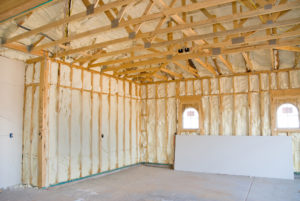Lead is a highly dangerous compound that can have detrimental effects on both humans and structures. In the majority of modern houses, lead-based paints are no longer used; however, there are older homes that still present with lead paint in some areas of the residence. Of course, many of the older properties have replaced or covered this lead paint with less dangerous substances, but some still have traces of lead. According to US federal legislation, estate agents or property sellers must provide knowledge of lead hazards to prospective buyers of any house built before 1978. The buyer should consider their options before making final a final purchase decision. This article will provide information on the dangers that a buyer should consider when dealing with lead paint or pipes.
What Is The Primary Danger Of Lead-Based Living?
Lead Poisoning
Lead poisoning, also known as the “silent disease,” is the result of contact or exposure to lead-based paint or pipes. It affects humans slowly without displaying any initial symptoms. However repeated exposure has been known to cause problems in sleep patterns, headaches, memory loss, constipation, anemia, and abdominal pains.
Lead poisoning is most commonly found in young children because they are prone to placing objects or fingers in their mouth. Toxicity is relatively rare after single exposures, but ingestion can result in high toxicity and extreme lead poisoning.
If not removed from the area of lead exposure and experiencing prolonged lead poisoning, the long-term consequences can be dire. Lead poisoning leads to chronic damage to the nervous system, brain damage, learning disabilities, interruptions in development, miscarriages, convulsions, and even death.
What Can Contribute To Lead Poisoning?
1. Lead-based Paints
Statistics show that approximately 90% of North American homes built before the 1950s will contain lead-based paint. Exposure to this paint is dangerous in the form of chipping where paint chips fall to the ground and can be inhaled or, in the case of children, placed into their mouth. Of course, it is not only the paint chips that can cause health problems. Both children and adults are at risk from the dust resulting from normal friction around window frames and door jambs. This dust is created when surfaces are scratched and is easily inhaled by any individual exposed to it.
2. Lead Pipes
Lead piping is another health hazard that must be considered as lead pipes were commonly used for household plumbing. The lead softened pipes making them easier to bend by hand, thus simpler to repair. Unfortunately, the lead in the tube would infiltrate the water and contaminate the water supply to the residents of the house.
When modern copper pipes were introduced, the lead pipe was eliminated; however, some older houses opted to solder lead pipes to modern copper pipes using molten lead. Furthermore, molten lead was also used to seal the joints in the iron pipes that carried waste to the sewers. This maintained the amount of lead in the water despite new copper piping being laid down and increasing the amount of lead poisoning.
Final Words
As can be seen, lead poisoning is the primary problem when dealing with lead-based paint and pipes. Hire a health inspector to ensure the home is safe and use water filters to remove lead from tap water. Of course, the ultimate solution is the replace all piping with safer materials.
